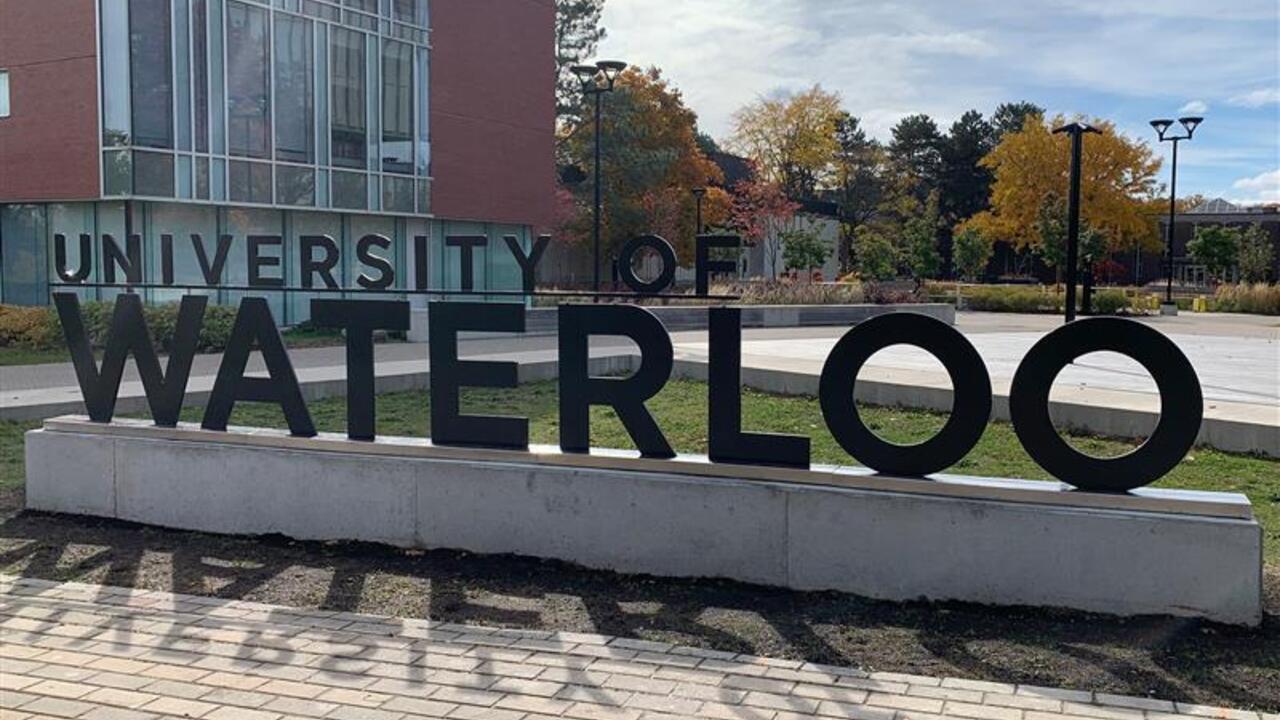
Waterloo department celebrates 50 years
The University of Waterloo’s Department of Geography and Environmental Management is turning 50.

The University of Waterloo’s Department of Geography and Environmental Management is turning 50.
By Media RelationsWATERLOO, Ont. (Wednesday, May 30, 2012) - The University of Waterloo’s Department of Geography and Environmental Management is turning 50, and it’s kicking off celebrations with a reunion tomorrow.
The reunion is timed to coincide with the annual meeting of the Canadian Association of Geographers, taking place at Congress of the Humanities and Social Sciences, May 28 to June 2. Waterloo and Wilfrid Laurier University are jointly hosting Congress 2012.
All alumni, students, and faculty, former and current, are invited to a reception May 31, from 5:30 to 9:00 p.m. There will be tours of Environment 3 at 5:30 p.m., and the reception starts at 6:00 p.m. at the Festival Room in South Campus Hall at the University of Waterloo.
The Department of Geography, as it was once known, began as part of the Faculty of Arts in 1962, when professors Ralph Krueger, Aubrey Diem, and Roy Officer moved to the University of Waterloo from Waterloo College, now Wilfrid Laurier University. The first five graduates, all transfer students, received their diplomas in 1963. The department is now part of Waterloo’s Faculty of Environment.
Geography, the School of Planning, the Department of Man-Environment Studies (now the Department of Environment and Resource Studies), and the School of Architecture (now part of the Faculty of Engineering) amalgamated in 1969 to form what is now called the Faculty of Environment. It was the first undergraduate faculty of environment in Canada.
Geography was renamed the Department of Geography and Environmental Management in 2008. Today, it boasts many award-winning faculty, including Bruce Mitchell, a Fellow of the Royal Society of Canada; Ellsworth LeDrew, a Fellow of the Canadian Aeronautics and Space Institute; Jean Andrey, who has won four prestigious teaching awards; Daniel Scott, who is Canada Research Chair in Global Change and Tourism; and Jonathan Price, who is leading a $6.7-million project to turn post-mined oil sands land back into peatland, a task never accomplished before.
Geography combines natural and social sciences, and often information technology, to understand the world. In addition to geography and environmental management, students can study geomatics or aviation. The co-op option offers the most work experience of any geography program in Canada. There are 700 undergraduate and 150 graduate students, making it the largest department in the faculty. As of June 2012, there will be some 5,700 alumni.
For more information on anniversary celebration, please go to uwaterloo.ca/environment/events/gem-50th.
About the University of Waterloo
In just half a century, the University of Waterloo, located at the heart of Canada's technology hub, has become one of Canada's leading comprehensive universities with 34,000 full- and part-time students in undergraduate and graduate programs. Waterloo, as home to the world's largest post-secondary co-operative education program, embraces its connections to the world and encourages enterprising partnerships in learning, research and discovery. In the next decade, the university is committed to building a better future for Canada and the world by championing innovation and collaboration to create solutions relevant to the needs of today and tomorrow. For more information about Waterloo, www.uwaterloo.ca.
-30-
Media Contacts:
Karen Kawawada
Communications Officer
Faculty of Environment
University of Waterloo
519.888.4567, ext. 38100
karen.kawawada@uwaterloo.ca
Pamela Smyth
Media Relations Officer
Communications & Public Affairs
University of Waterloo
519.888.4777
psmyth@uwaterloo.ca
www.newsrelease.uwaterloo.ca
Waterloo news release no. 45

Read more
The faculties of Science and Arts introduce a new theatre and performance course tailored to Science students

Read more
Waterloo’s WatSPEED to provide businesses with access to AI upskilling programs in new province-wide initiative

The University of Waterloo recently broke ground for the new space, scheduled for completion by this fall.
Read more
Construction begins on Indigenous outdoor gathering space at University of Waterloo
The University of Waterloo acknowledges that much of our work takes place on the traditional territory of the Neutral, Anishinaabeg and Haudenosaunee peoples. Our main campus is situated on the Haldimand Tract, the land granted to the Six Nations that includes six miles on each side of the Grand River. Our active work toward reconciliation takes place across our campuses through research, learning, teaching, and community building, and is co-ordinated within the Office of Indigenous Relations.